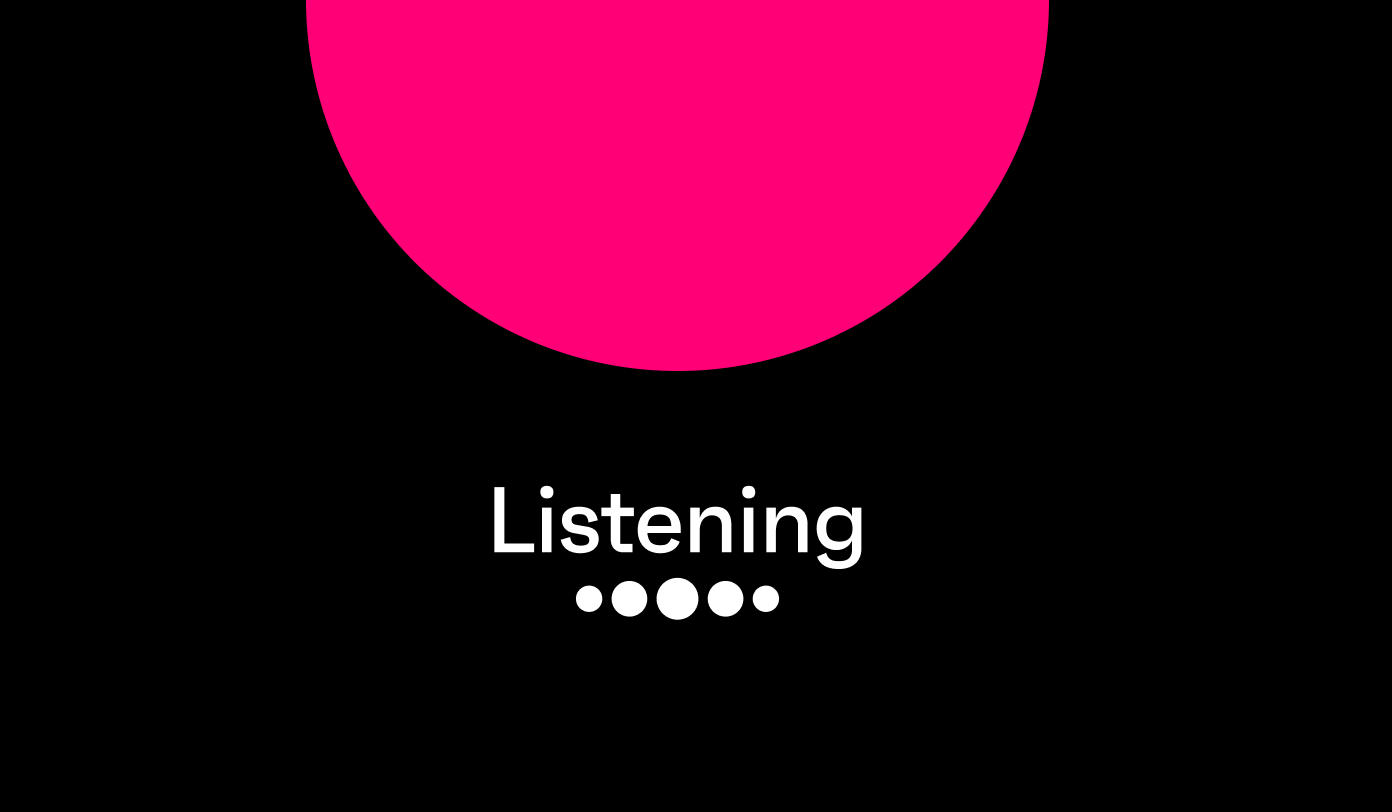Searching for a complete rundown of streaming statistics? We’ve rounded up 28, just for you.
Heading into 2025, shifting consumer trends are reshaping the streaming industry. From how long consumers are hanging out on streaming platforms to what they’re willing to shell out for access, things are moving fast. Get ready to explore the latest streaming statistics and delve into the essentials of TV bundles, subscriber turnover, and the fascinating realm of viewership.
Before we dive in, let’s clarify some key terms. If you’re already familiar with the basics, feel free to skip this glossary and jump straight to the main content.
What is streaming?
Streaming is when you watch or listen to stuff online without downloading it first. Netflix, YouTube, and Spotify are all examples of streaming. You can start watching a movie or listening to a song almost instantly. It’s super convenient and works across different devices. It’s safe to say streaming has totally changed how we get our entertainment.
What is linear television?
Linear TV, on the other hand, is the old-school way of watching TV. Shows come on at set times, and you tune in to watch them live. Channels like ABC, BBC, and NBC broadcast TV in this way. It’s great for stuff like sports or news.
What is a streaming bundle?
A streaming bundle is when you get multiple streaming services together in one package. It’s usually cheaper than paying for each one separately. For example, you might get Hulu, Disney+, and ESPN+ all in one bundle. They’re a great way to save money and still watch a mix of shows, movies, and live sports.
What is FAST TV?
FAST TV (free, ad-supported television) is a type of streaming service where viewers can watch content for free, but with ad breaks included. Platforms like Tubi, Pluto TV, and FreeVee offer this model, giving users access to movies, shows, and even live channels without the need for a subscription. While ads break up the content, FAST TV appeals to budget-conscious viewers who want to enjoy a wide range of entertainment without paying a monthly fee.
28 TV and streaming statistics: Key trends, habits, and regional differences
- 89% of consumers around the world watch broadcast TV daily.
- 76% of consumers watch online TV/streaming daily.
- On average, consumers spend 1 hour and 22 minutes a day watching online TV/streaming (10 minutes less than the peak in 2022) and 1 hour 47 minutes a day watching linear/broadcast TV.
- 26% of consumers say they’ve paid for a TV streaming service in the last month.
- 52% of US TV watchers say subscriptions are getting too expensive, which is a 77% increase since 2020.
- 43% of US TV watchers say they binge-watch more than 3 episodes of a show at a time.
- 19% of US TV watchers prefer streaming a series with scheduled weekly releases.
- There’s been a 40% increase in US consumers preferring weekly releases since 2020.
- Americans watch an average of 3 hours and 2 minutes of linear TV each day.
- Saudi Arabia, South Africa, and Egypt lead in daily streaming time, averaging 1 hour and 52 minutes per day.
- Japan and South Korea trail in streaming time, with only 20 minutes and 44 minutes of streaming daily, respectively.
- 24% of people globally love to stream international content, with Brazil (46%) and the Philippines (35%) leading this trend.
- 60% of Germans prefer dubbed content, while 73% of Malaysians prefer subtitles.
- 39% of consumers who are considering or have canceled a subscription say cost is the main reason, followed by price increases (32%), not using it enough (30%), and paying for too many services (29%).
- 75% of consumers aren’t considering canceling their TV subscription.
- 29% of Gen Z and millennial TV viewers in the US enjoy watching shows that others talk about.
- 28% of consumers who plan to cancel at least one TV subscription use a paid-for membership site for following creators.
- 49% of consumers say lower costs than individual subscriptions would make them sign up for a TV streaming bundle, while 40% say high-quality content would make them sign up, and 33% say ad-free content.
- Gen Z and millennials show the highest interest in TV streaming bundles (60%).
- Gen X and baby boomers show lower interest (50% and 35%, respectively).
- Baby boomers are 9% more likely (and Gen X are 6% more likely) than the average consumer to say that access to live sports events would entice them to sign up for a bundle of TV streaming services.
- 17% of US TV watchers say they’ve used Tubi in the last month.
- 15% of US TV watchers say they’ve used The Roku Channel.
- The number of Americans using FreeVee has increased by 92% since Q2 2022.
- 15% of streamers say they’ve downgraded or canceled a subscription because of ads being introduced.
- 63% of consumers who’ve watched a TV show/film on a streaming service say they’ve kept their subscription the same in response to ads, while 11% say they’ve upgraded to avoid ads.
- Gen Z is 18% more likely and millennials are 9% more likely than the average online TV streamer to favor personalized recommendations in ads.
How do streaming and TV habits differ around the world?
The USA tops the charts for daily broadcast TV watching, with Americans glued to their screens for an average of 3 hours and 2 minutes each day. Over in the UK, they’re not too far behind at 2 hours and 42 minutes. But when it comes to streaming TV, Saudi Arabia, South Africa, and Egypt are way ahead, with folks there streaming for about 1 hour and 52 minutes daily. Japan and South Korea, on the other hand, trail behind, with only 20 minutes and 44 minutes of streaming daily respectively.
Also, a fun fact: 24% of people love to stream international content. Brazil is ahead with 46% of consumers saying this, followed by the Philippines at 35%. And there’s a cool split between people who prefer dubbed versus subtitled content. In Germany, 60% lean towards dubbed, while in Malaysia, 73% go for subtitles.
How much time do people spend on streaming vs. linear TV each day?
On average, consumers are clocking in about 1 hour and 22 minutes daily on streaming services.
While that might sound like a lot, it’s actually 10 minutes less than the peak we saw back in 2022. People are juggling between their favorite streaming platforms and traditional TV.
And in fact, it’s not as much time as people spend on traditional, linear TV – which is still holding its ground. Consumers are averaging 1 hour and 47 minutes daily on traditional TV. So even with the rise of streaming, people still love their regular broadcast TV channels.
How many people pay for streaming services?
A solid 26% of consumers say they’ve paid for a streaming service in the last month. This shows that despite the rising costs, people are still willing to shell out for their favorite shows and movies.
But here’s the kicker: with so many options out there, consumers are getting picky. While a good chunk are sticking with paid subscriptions, 52% of US TV watchers feel subscriptions are getting too expensive, which is a big jump since 2020 — up 77%.
How many people use subscription bundles?
Bundles can offer a more cost-effective way to access multiple services without breaking the bank – and price really is a driver. 49% of consumers say the lower price point of bundles would make them more likely to sign up for one, while 40% say high-quality content would push them over the line, and 33% say ad-free content would lure them in.
Younger generations like Gen Z and millennials show the highest levels of interest in TV streaming bundles, with 60% saying they’re intrigued. Gen X and baby boomers, on the other hand, show lower interest levels (50% and 35%, respectively).
And let’s not forget the live sports angle. Baby boomers are 9% more likely, and Gen X is 7% more likely than average to say that access to live sports events would encourage them to sign up for a bundle of TV streaming services.
Are consumers canceling their TV subscriptions?
As consumers tighten their purse strings in these tough economic times, how many are considering switching off their subscriptions? Well, not many. Almost 75% of consumers aren’t even thinking about canceling their TV subscriptions.
One reason for this loyalty might be the quality of content. Whether it’s the latest hit series, exclusive movies, or just a wide variety of shows, the goods are being delivered.
Why do people cancel their TV subscriptions?
So what, if anything, would make someone cancel? And who’s first in line? Our data shows that Americans are 19% more likely to consider canceling a service because they’re paying for too many. Across the globe, 39% of consumers who are considering canceling their subscription or who have already canceled theirs say cost is the reason, followed by price increases (32%), not using it enough (30%), and paying for too many services (29%).
Meanwhile, 28% of consumers who plan to cancel at least one TV subscription use a paid-for membership site for following creators.
How many people use FAST TV (Free ad-supported streaming services)?
The option of free, ad-supported services is catching on. More and more viewers are using platforms like Tubi and The Roku Channel. In fact, 17% of US TV watchers say they’ve used Tubi in the last month, while 15% say they’ve used The Roku Channel.
And FreeVee? Its usage shot up by 92% since Q2 2022 in the US. Ultimately, people are exploring different ways to get their entertainment fix without going over budget.
How do consumers feel about ads on streaming platforms?
Paying subscribers aren’t actually too keen on ads. 15% of streamers say they’ve downgraded or canceled a subscription because of ads being introduced. Meanwhile, 63% of consumers who’ve watched a TV show/film on a streaming service say they’ve kept their subscription the same in response to ads being introduced, while 11% say they’ve upgraded to a more expensive subscription to avoid ads.
Weekly releases vs. binge-watching: What’s more popular?
Binge-watching is a global pastime now. Around 43% of US TV watchers admit they dive into more than three episodes of a show in one sitting. For a lot of viewers, binge-watching is the ultimate way to relax. Whether it’s devouring the latest crime drama or catching up on a comedy series, there’s something satisfying about getting lost in a story for hours.
But it’s not everyone’s ideal night. 19% of US TV watchers say they prefer streaming a series where episodes have scheduled weekly releases. For this group of consumers, there’s something about the anticipation and the build-up that gets them hooked. Remember when everyone used to wait for a specific night of the week to catch the latest episode of their favorite show? Well, some folks are still all about that life.
Key takeaways for media brands, networks, and streaming services
As we look ahead to 2025, these streaming trends will continue to shape the evolving landscape. Here are some key takeaways:
- Diversifying content is key: There’s a growing global appetite for varied content which tells us a one-size-fits-all approach won’t work. Media brands need to cater to diverse tastes and regions by offering a range of content types and pricing models.
- Subscription fatigue is real: With 52% of US TV consumers feeling the pinch from rising subscription costs, there’s a clear need for more affordable, flexible options. Brands should consider not only how to price services competitively but also how to package them in ways that deliver both value and simplicity to the consumer.
- Ad-supported streaming is on the rise: The rise of free, ad-supported platforms like Tubi and FreeVee signals an opportunity to tap into viewers looking to cut costs without compromising on content. Media brands should take this shift seriously and think strategically about how to leverage ad-supported models while maintaining quality.
- User preferences are fragmenting: While binge-watching remains popular, 19% of viewers prefer weekly releases. The challenge for streaming platforms is to offer flexibility — meeting the needs of those who want it all now and those who enjoy a more paced viewing experience.
Ultimately, brands need to be nimble and proactive, continuously adapting to consumer preferences and finding new ways to innovate in this rapidly shifting streaming world.
Want to fuel your content strategy with consumer insights?
Unlock the guide





.webp?width=495&height=317&name=pink_thumb_graphs%20(1).webp)
.webp?width=495&height=317&name=pink_thumb_letter%20(2).webp)
